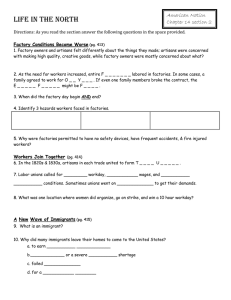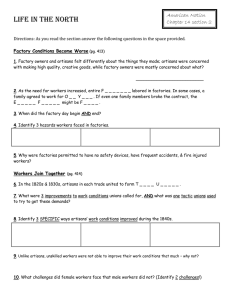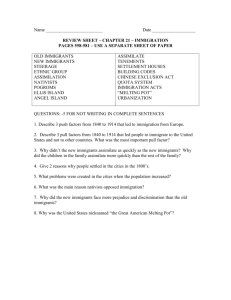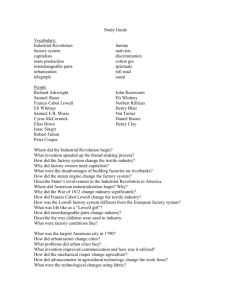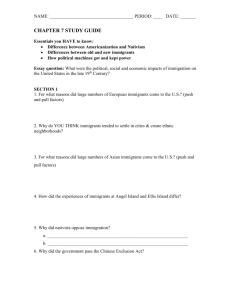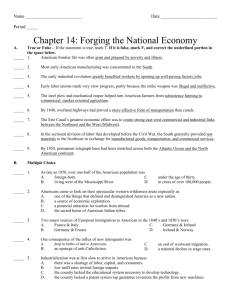Regional Societies - 11
advertisement
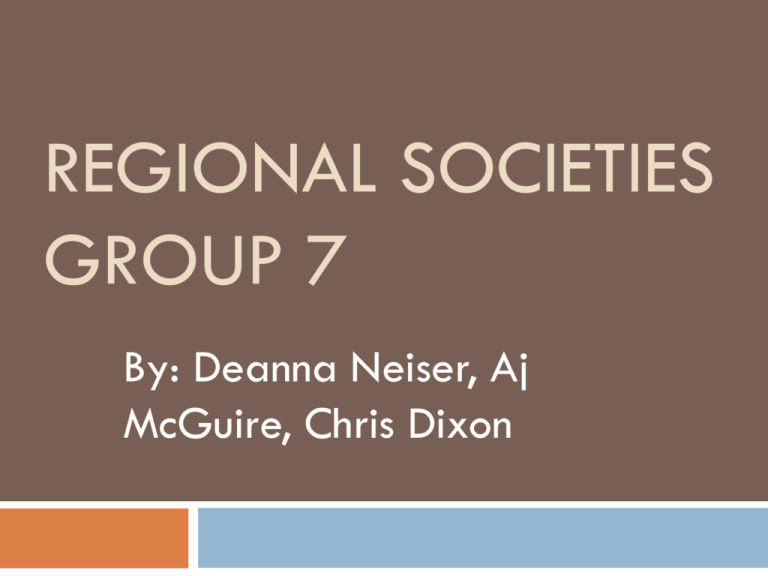
REGIONAL SOCIETIES GROUP 7 By: Deanna Neiser, Aj McGuire, Chris Dixon Differences in Lifestyles: Wealthy: Lavish homes with elegant furnishings including running water Attended expensive parties and balls Poor Lived crowded in small apartments, attics, or cellars with few convinces Neighborhoods plagued with crime, disease, and filth Middle Class Lived in simple but comfortable homes with convinces Had enough money to buy clothes, food, and other products Men worked outside of the home and the women were expected to stay in the home Factory System: Lowell wanted to build a water powered loom to produce cotton textiles like those Lowell had seen in Britain With help, Lowell designed and constructed a power loom that he set up in a factory in Massachusetts The system of manufacturing by machines doing everything under one roof- from spinning the thread to weaving the cloth, is known as the factory system Technology Transforming Life: Americans now call in the aid of machinery in almost every department of industry New farming technology included improvements to the plow (John Deere steel plow) and the development of the mechanical reaper For a home, a new sewing machine, cooking utensils, butter churns, better stoves, pots and pans, water pumps Difficulties Do To The Industrial Revolution: Women worked so hard and they barely made enough money to get by Manufacturers took advantage of child laborfaced grim working conditions The organization of unions fought for the interests of labors (shorter workdays) Northern Factory Workers: The poor working conditions, low wages, and child labor caused many workers to organize unions* *groups who fight for the interests of workers Many unions used a tactic called strike* *a refusal to work until employers meet union demands Two Largest Groups of Immigrants in the mid 1800’s: Irish Immigrants Largest group of immigrants (came during the Irish Potato Famine in the 1840’s. Roman Catholic Most couldn’t afford land in the U.S. so they settled in crowded slums Faced major prejudice and therefore lived in separate communities (Eastern Cities) German Immigrants Second largest group of immigrants (of the mid 1800’s) Most were Protestant, 1/3 were Roman Catholic, and 250,000 were Jewish Faced prejudice and many therefore lived in separate communities (Schools that taught in German, German Newspapers) Nativism: Favoring native-born Americans over the foreign-born; viewed them as inferior. Nativists blamed immigrants for taking jobs Nativists blamed immigrants for the poor city slum conditions Many nativists were Protestant and disliked the Roman Catholics (1830’s-1850’s: AntiCatholic Riots) Know-Nothings: Political party formed in 1849 by nativists who opposed the Catholic Church and supported measures making it difficult for foreigners to become citizens and hold office



